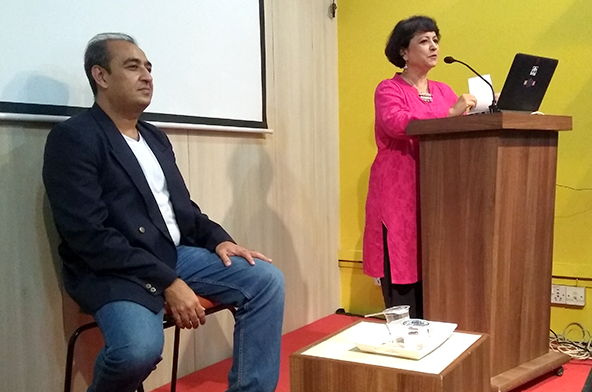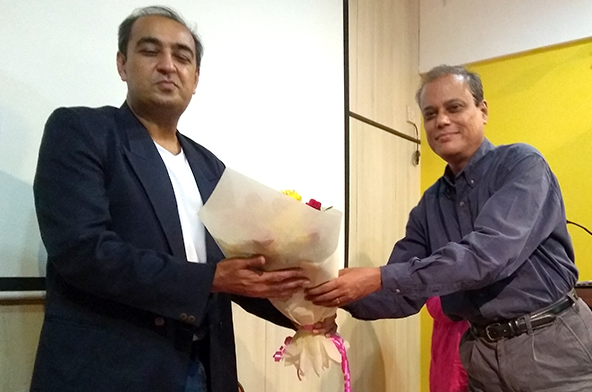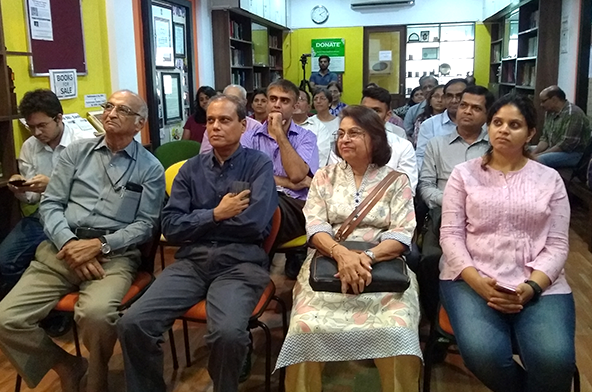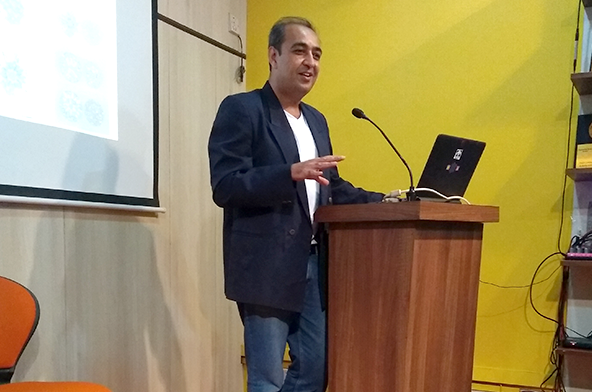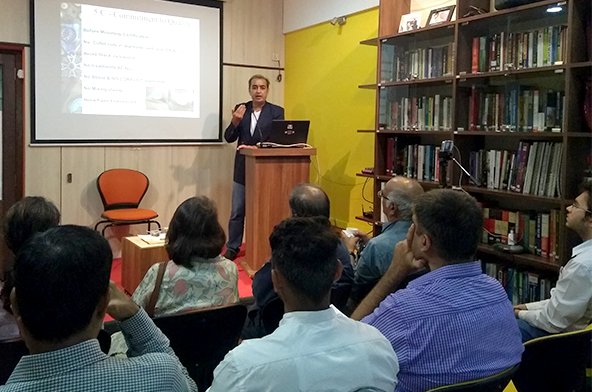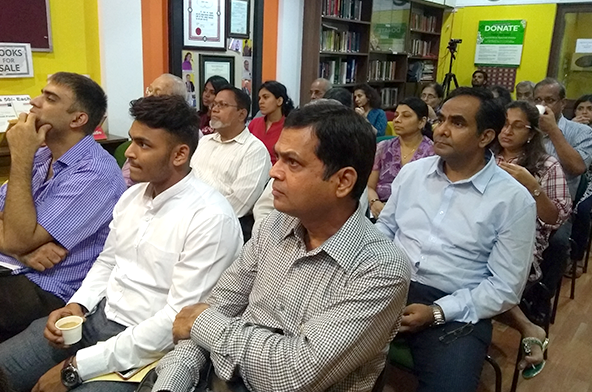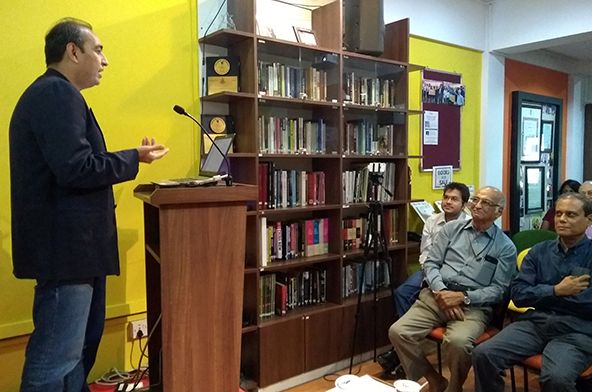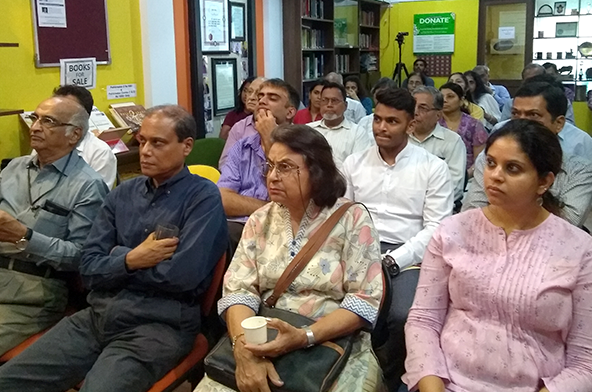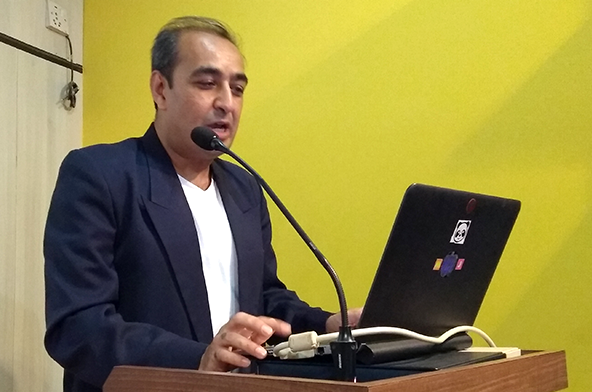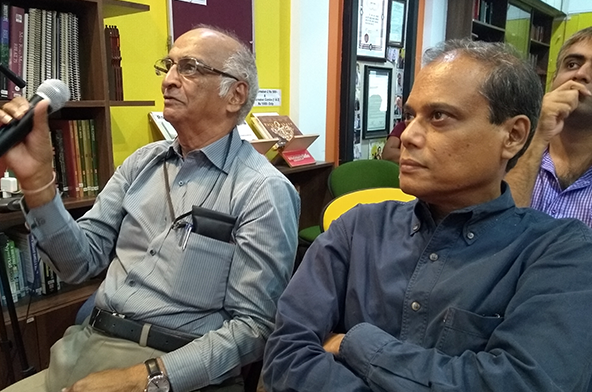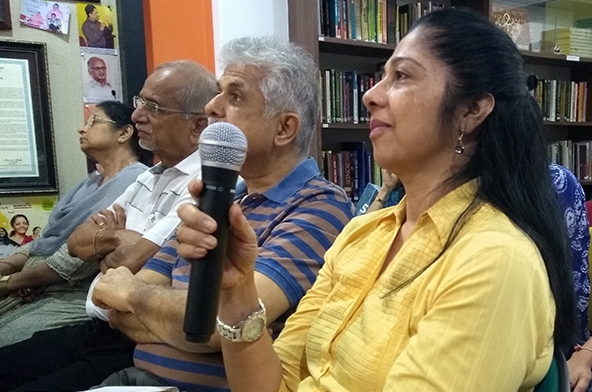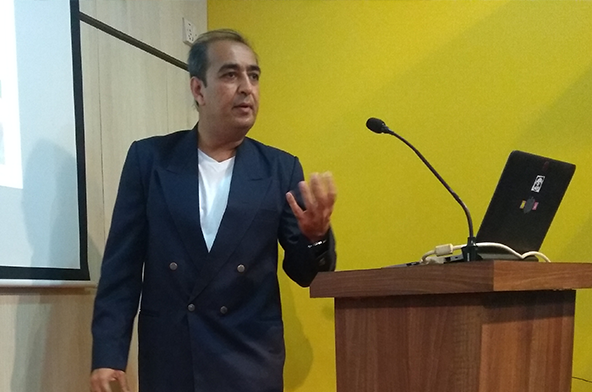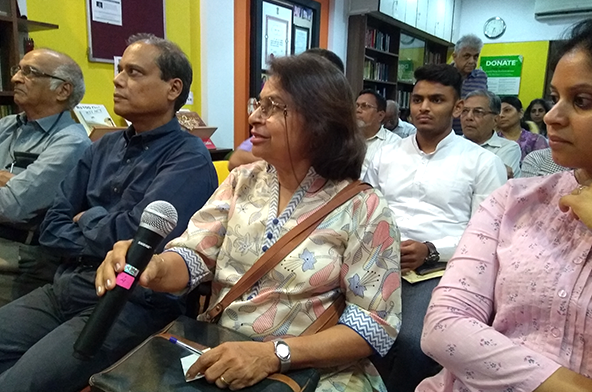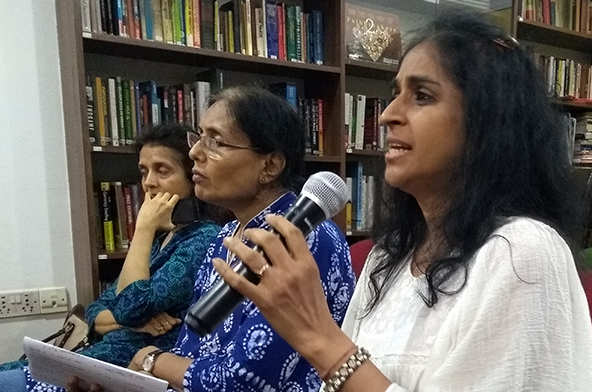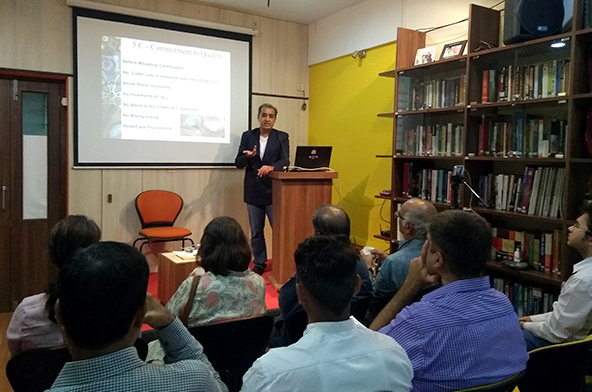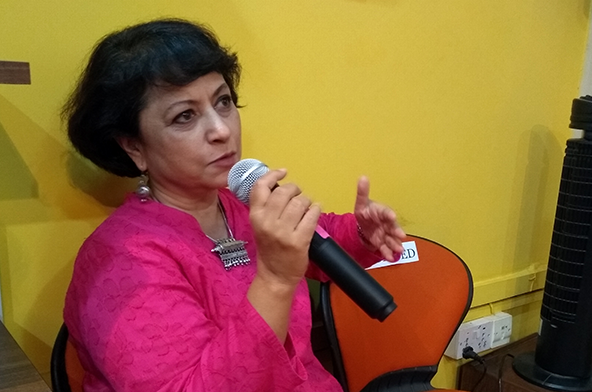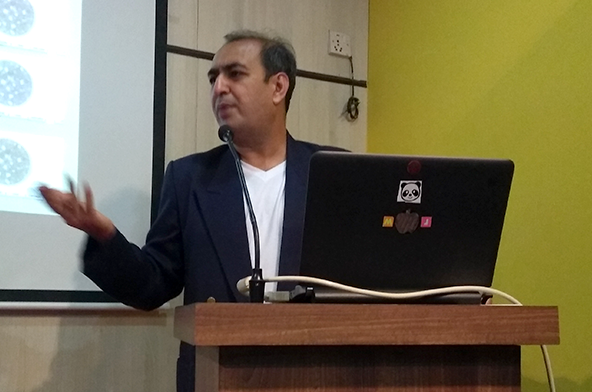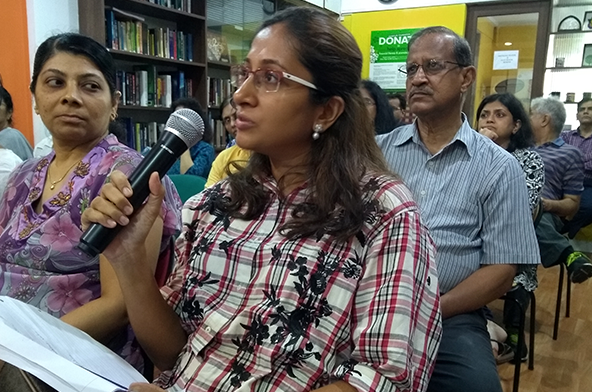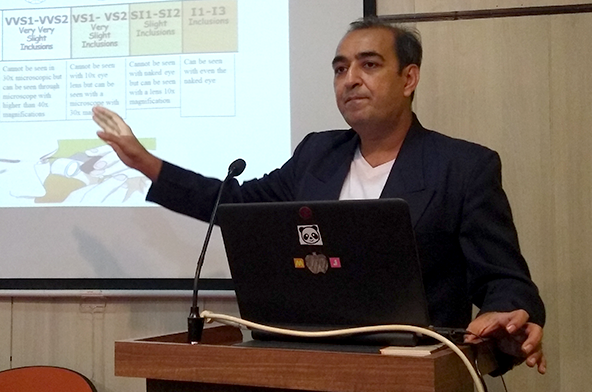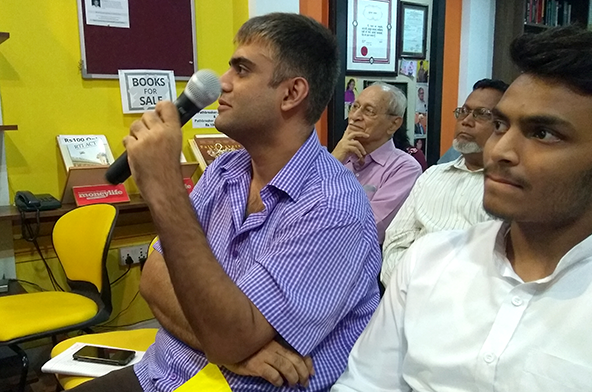
A diamond is a symbolic gem, be it in the form of a family heirloom, an antique piece of jewelry, an engagement or a wedding ring. However, it is rare that diamond owners are aware of what precisely makes one diamond better than any other. Rajiv Wadhwa, gemologist and area business manager at the Titan Company gave an informative talk on diamonds explaining how an average person can distinguish between different types of diamonds. He says no matter how expensive or cheap a diamond is, quality is long remembered even after price is forgotten .
Mr Wadhwa recommends, the consumer to maintain some sense of satisfaction and confidence in mind before making a diamond purchase. A diamond can be judged and classified with four important factors, the four Cs - carat, colour, cut and clarity. Of these factors, the cut is the most obvious element which is noticed by the average buyer as it provides the diamond with a distinguishing sparkle. The cut of diamond decides its brilliance and price. Cut is further defined by the proportion, symmetry and polish of the stone. An ideal cut will all light to be reflected or refracted back out from the crown making the diamond perfect , excellent or brilliant . A deep or shallow cut will make the diamond look dull. A potential buyer should ensure that the diamonds are certified, the procurement policies are error proof and quality norms are stringent enough.
He says, it is essential to understand the basic nomenclature used when describing diamonds to ensure that one is making the right purchase. The flat top portion of a diamond is called a table , while the bottom tip is referred to as a cullet . Here it is important to note that a cullet can be pointed as well as flat. Ideally, when making a purchase the consumer should look for a pointed cullet as it allows light to be refracted/reflected within the stone making it more radiant. A flat cullet would allow the light to pass through making the diamond seem duller. Obviously, an easy way the consumer can see if their diamond has a flat cullet is to turn it over. However, as this may not be possible if the diamond is already set, one check to see if there is a needle type point distinguishable from the table using a 10x jeweller s loupe.
There is no standardised means of defining clarity in a diamond. Clarity grades in a diamond are defined by the inclusions or blemishes that appear within the stone. Rajiv shared his scale, which ranged from Flawless/Internally Flawless to Inclusions/Slight Inclusions. A flawless diamond will be significantly more expensive than one that has some foreign inclusions within the stone. He said that while consumer may not notice these inclusions by the naked eye, they can be viewed through a 10x jeweller s loupe, which he insisted is a must for diamond shoppers.
When looking at the colour grading, ideally the diamond should be colourless or nearly colourless, unless of course the buyer prefers a certain colour. However, to ensure quality and worthiness of a diamond, Rajiv recommends that the consumer only buy diamonds that have a natural colour rather than those that have been artificially treated. The colour of a diamond is graded with the alphabets D through Z, with D representing colourless and Z yellow. Colour of a diamond has to be graded under a standardized instrument, that compares the stone in question with pre-certified master diamonds.
Before making a purchase of diamonds, there are certain checks that a consumer can do to ensure satisfaction. One of the first questions a customer should ask the jeweller is whether the diamond has been graded before or after mounting. When a diamond is graded before mounting it is viewed from all angles, ensuring that it is graded in its natural state making visible all the inclusions and blemishes which might otherwise be hidden when mounted. One should also check the certification provided to see whether the diamond has undergone clarity treatment - laser drilling or fracture filling and colour treatments - HPHT (high-pressure high temperature) or rhodium coating. Artificial processes that enhance the brilliance of the stone might make it seem more alluring however, they are comparatively cheaper than a natural diamond.
By placing the diamond upside down on a piece of written material, one can check for clarity. If the words are slightly visible through the diamond, then it is a fake. But if the words appears as smudged, then the diamond is of a good clarity. One can also conduct a huff test by blowing air on a diamond 3-4 times and checking whether the consequent mist on the stone disappears within two seconds. If the mist takes longer to clear, then the diamond is once again a fake. Rajiv recommends that the consumer should buy decent 10x magnification jeweller s loupe that they can readily use to check for the natural characteristics within a diamond. Finally and most obviously, the consumer should check that the certification provided is authentic with all the necessary details of cut, clarity, caratage and colour clearly mentioned.
Mr Wadhwa also briefly discussed the various lab instruments that are used to grade a diamond before it is selected by a certain jeweller. Although the average consumer may not find a direct use for such instruments, he said knowing that a diamond has gone through a rigorous testing process provides a sense of satisfaction.
After making a suitable purchase, it is also the consumer s responsibility to maintain the diamonds in a clean, pristine state. Care should be taken that the diamond jewellery is not directly boiled in hot water but instead cleaned with a solution of lukewarm water and few drops of vinegar. Rajiv also recommends using plain fluoride toothpaste with a soft toothbrush to polish the stone. When storing diamonds, care should be taken to keep them separate from other pieces of jewellery as they can be easily scratched. A scratched diamond would be worth significantly less than its original value. Rajiv advises the usage of butter paper or muslin cloth, while completely avoiding cotton cloth as it absorbs moisture.
When a consumer is buying a diamond they should also ask about the jewellers buyback policy, whether they offer the invoice value or the prevailing rate. Rajiv claims, that the value of a diamond does not fluctuate as much as gold does, it generally depends on the demand of the market for a particular cut.


